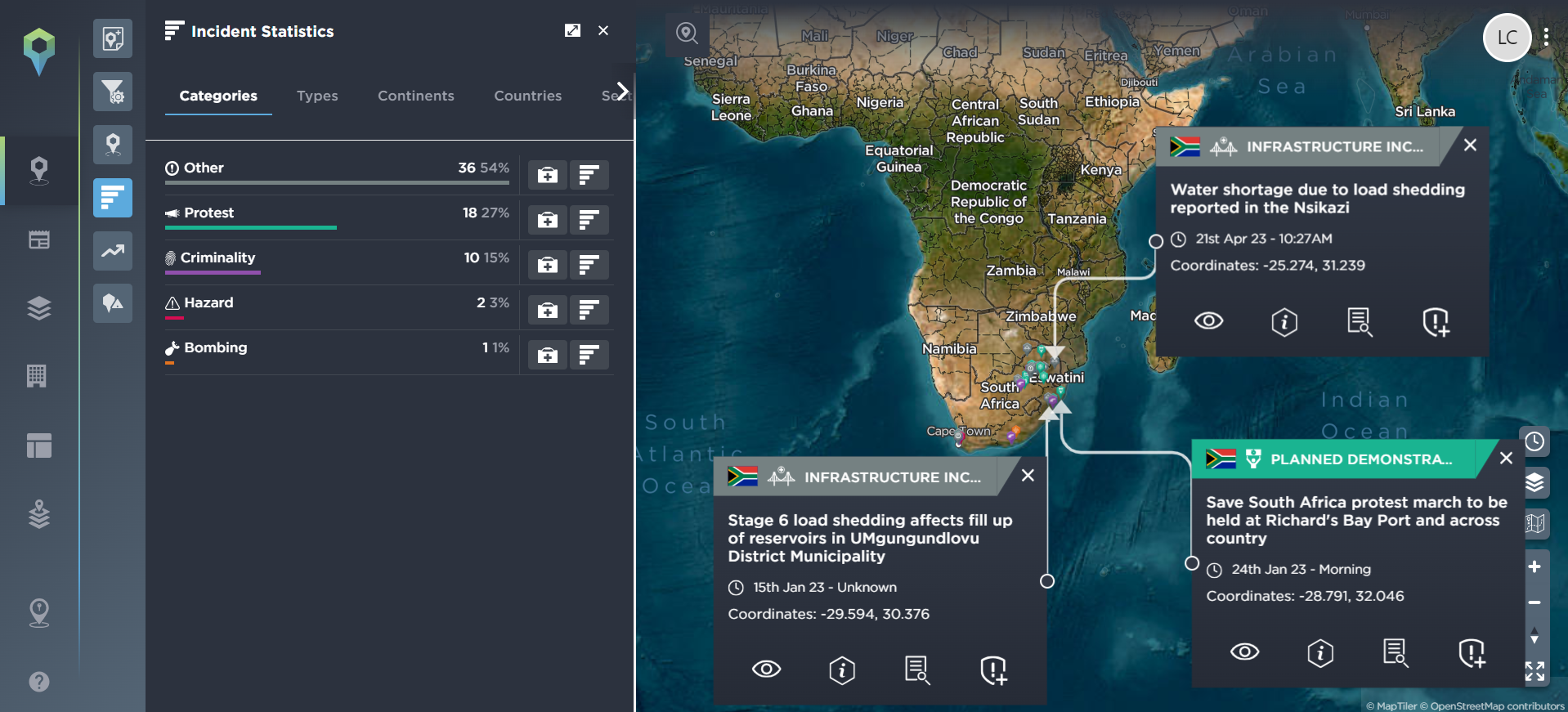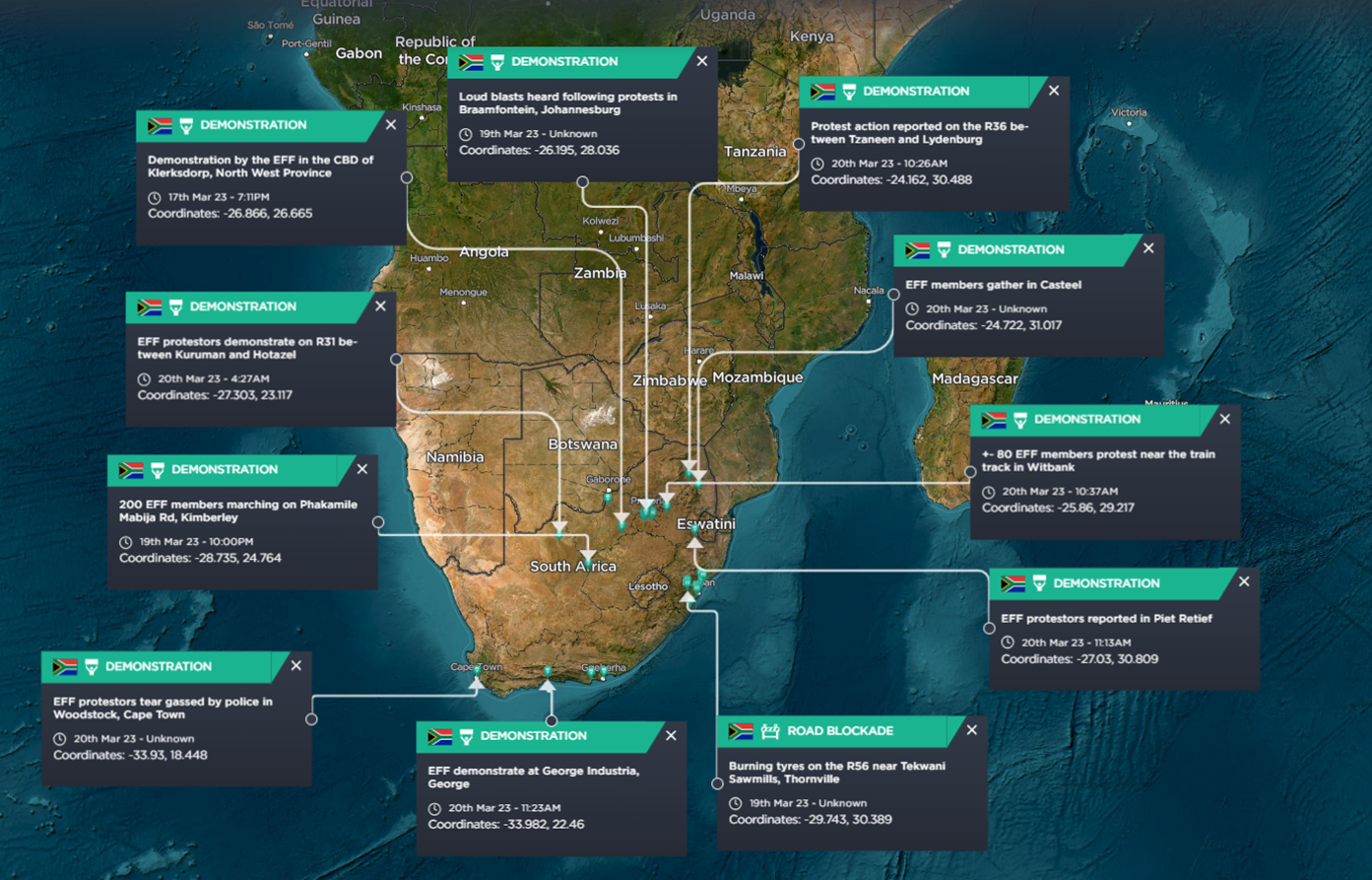Shifting Perceptions on Renewables and Electricity Generation in South Africa
This blog delves into the often-overlooked global energy crisis, examining South Africa's struggle with energy demands and exploring potential solutions such as renewable energy and nuclear power to ensure a stable and sustainable future.
Introduction
The concept of a global energy crisis is rarely discussed in popular media streams today. With the powerful social and normative movement of climate damage and environmental shifts taking the forefront in narratives and discussions, few know the dangers and critical needs that face states today. As executive decision-makers struggle to meet domestic energy demands, they must simultaneously maintain international agreements and appease active lobbyists and social groups. An energy crisis is not a new concept, with the world having gone through a similar trend in the 1970s due to shocks in the oil market. However, there are a few key differences that highlight how the current global energy crisis differs:
- An interconnected global economy: Globalisation is at its highest level in the 21st century.
- Oil has become less relevant: Natural gas replaced oil as the most critical energy resource.
- The push for renewables: Renewable energy is defined as harnessing power from natural processes.
- Rapidly growing power needs: Often overlooked by the public as a service taken for granted, power planning and growth are critical for the expansion of the private sector.
While all states need to consider the power infrastructure, with countries such as Germany buckling under increasing gas prices, several countries, including South Africa, have entered an official state of crisis.

Incidents of load shedding in South Africa [Image source: Intelligence Fusion]
South African Energy Crisis
An emerging energy crisis has rocked South Africa since late 1998, when concerns first started being voiced. Spurred forward by mismanagement, corruption and poor decision-making, indicators of future problems were clear, and government administration took no action besides a brief consideration of privatising state electricity company Eskom, leading to consistent shortfalls and load shedding (planned blackouts) to preserve the integrity of the grid. Further plans to expand energy were embroiled in corruption allegations as investigations into foreign involvement and elites uncovered further evidence of state capture, such as the LNG plans involving Karadeniz and PowerGroup SA.
While the situation has improved significantly in 2024 from its peak in July 2023, the main question is how to move forward within the narrative of global energy discussions. South Africa generates 86 percent of its power using coal and is one of its largest consumers in the world. When compared against other states, such as China, which has larger coal consumption but growing alternatives, the ratio of coal to alternative energy sources is severely unbalanced. With international forums pushing for the limit of as much dirty energy in the form of coal and oil as possible and South Africa’s lack of infrastructure and natural gas suppliers, two opportunities present themselves: Renewable energy and nuclear energy.
The case for renewables
Renewable energy is the largest PR-friendly option in the near future. Renewables have been growing steadily globally, but valid statistics are difficult to research due to the nature of the data, leaving an approximation of 30-38 percent of global energy production being attributed to renewable energy, many of the countries contributing to this number being western and northern European states. South Africa has more limited options for renewables without access to geothermal sources or significant hydroelectrical sources. However, solar and wind power are viable, particularly solar power within areas of the country that see significant sun exposure, such as the Northern and Eastern Cape area, where several private endeavours, some with a power buying agreement with Eskom, are being established.
However, while renewables have the typical advantages that have been discussed many times in the past, with zero emissions and low running costs, there are major concerns that limit South African interest in mass renewables at this stage. Primarily, the setup costs vs. power generated are high. South Africa has little time for a long-term transition and no available funding to prepare long-term projects in the same fashion as larger economies.
This does not mean that South Africa is ignoring the potential of renewables, it has seen a large growth in renewable power, the majority has been in the form of smaller private ownership, rather than larger generation suitable on a state level. A solution with a higher generation that does not rely on batteries is more attractive, leading to an increased interest and investment in nuclear power.
The case for nuclear power
The case for nuclear power in South Africa is simpler to make, chiefly because a viable case study exists in the form of the Koeberg nuclear powerplant based in the Western Cape and the sole nuclear energy powerplant on the African continent. Despite its age, it has had a stable run, and recent stress tests following the 2011 Fukushima disaster found the structure in excellent shape. However, the plant is currently undergoing a life extension maintenance service. With a stable run, Koeberg has proven to be a viable alternative to fossil fuels, with plans to expand nuclear energy in the advanced stages.
While renewables are certainly an attractive and viable option for more affluent classes, the human cost of power shortages tends to have a far stronger effect on the working classes in a state, particularly in countries with a large economic disparity, such as South Africa. Those who are unable to acquire alternative forms of power other than the state suffer the most from knock-on effects on infrastructure, and it is important to remember that renewable energy as a total statewide power provider will take a considerable amount of time to establish. During that time, there will be a need to ensure that the populace has secure access to power.
Global direction
In the last 20 years, the demand for electricity has grown exponentially, with larger states such as China seeing a 481 percent increase from 2000 to 2021. In order to see renewables as a viable option, there would need to be an enormous expansion in the capability of battery systems, with estimates placed at six times the current production of commercial batteries, currently limited in the form of Lithium-Ion. These systems themselves are problematic, containing a variety of rare-earth metals that are costly to extract, detrimental to the environment, and leading to regional instability and increased inequality in impoverished areas that rely on cheap labour to extract the minerals. In addition, ion-lithium batteries are prone to instability after disposal and are a fire hazard.
With such rapid energy demands, pressure to eliminate high-environmental-impact power sources, and high costs compared to the low efficiency of renewables, larger states are viewing nuclear options for power. China is rapidly expanding, and the United States, France, Belgium, and Germany are following suit. Developing nations are equally interested in the benefits of nuclear power, needing robust grids and an energy surplus to fuel economic expansion.
Conclusion
In a world of power crisis where electricity is needed to fuel growth and reinvigorate economies, nuclear power is making a strong comeback from the early scares of the 1986 Chornobyl and 2011 Fukushima disasters. While nuclear accidents make large headlines, the threat they pose in modern times is significantly less than fossil fuels, and they provide an opportunity as a stop-gap measure until safe and near zero waste power options are available and more economically viable within a stable framework of developing nations such as South Africa, which urgently needs to plan for future electricity demands.
Through the lens of South Africa, it is possible to trace realistic concerns and plans to counter global power demands and looming energy crises:
- Continued growth and development of renewable energy, particularly in micro industries and the private sector, removing the burden from governments.
- Reinvestment into nuclear power as a stop-gap measure to meet demands.
- A mixed portfolio of alternative energy sources will both add security to the state grid and provide an opportunity for development of true net zero power sources.
To understand more about the energy crisis in South Africa, speak to a member of the team about a custom intelligence report or a free demo of the Intelligence Fusion platform.
Guest Author - Albertus Meintjes
Bert is a South African intelligence analyst who obtained his BA International Relations at the University of Stellenbosch and MA International Security at the University of Leicester. Finding interest in foreign societies and interactions, he spent 10 years working in Asia and the Middle East.
Bert joined Intelligence Fusion in 2017 before taking on overseas contracts and rejoined the team as a contractor in 2023.

![The image shows demonstrations that may impact businesses, assets and people [image source: Intelligence Fusion].](https://www.intelligencefusion.co.uk/wp-content/uploads/2023/03/image4.png)
